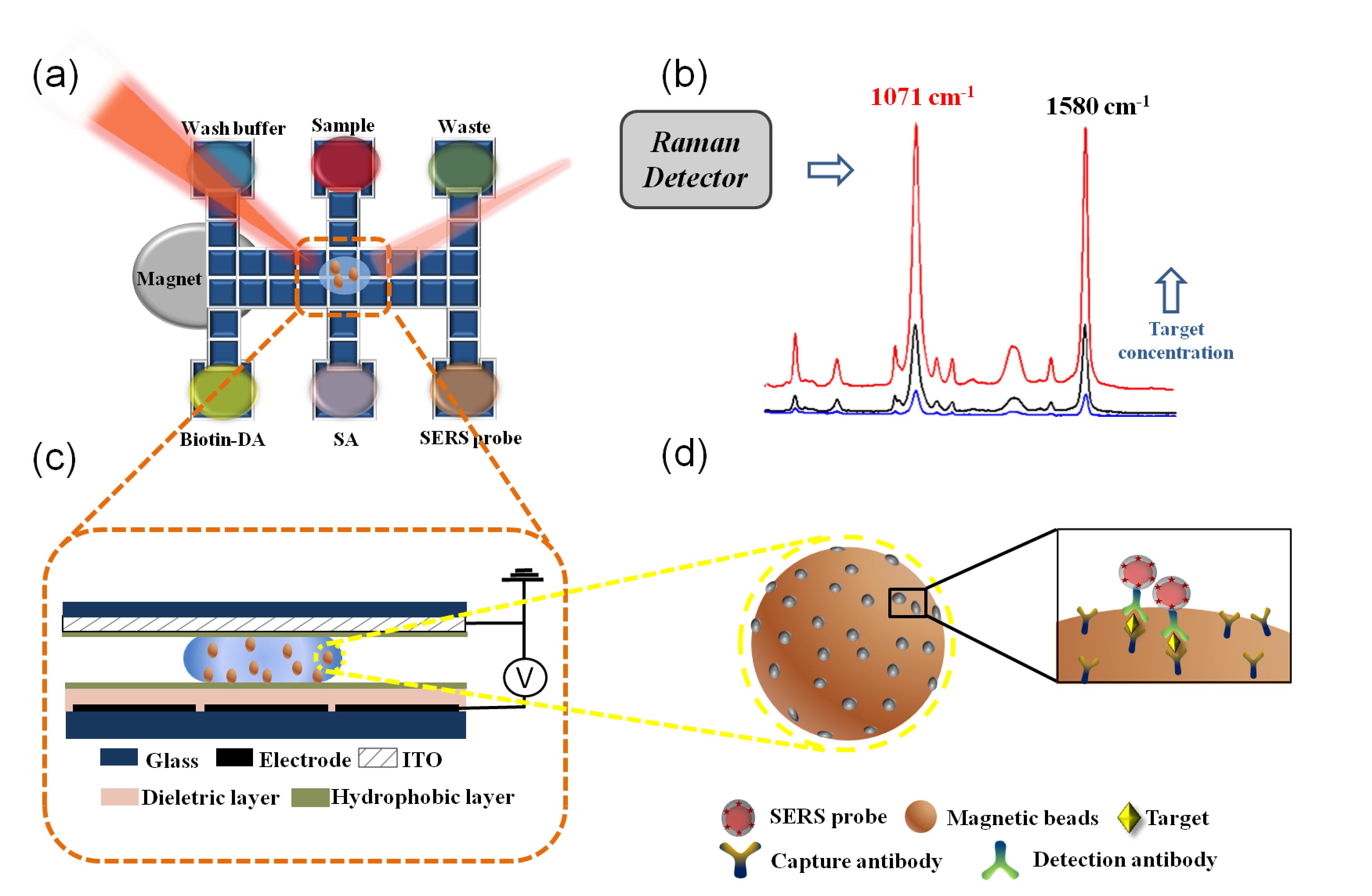Professor Yang
 Know more>>
Professor
Department of Chemical Biology, Xiamen University
Know more>>
Professor
Department of Chemical Biology, Xiamen University
Contact Information
Yang's LaboratoryRoom 532, Lujiaxi Building, College of Chemistry and Chemical Engineering, Xiamen University, Xiamen 361005, China
Ph: +86 (0) 592-218 7601cyyang@xmu.edu.cn
Yang Wang's paper has been accepted by Analytical Chemistry
2018-03-23 01:50:00

Digital microfluidics (DMF) is a powerful platform for a broad range of applications, especially immunoassays having multiple steps, due to the advantages of low reagent consumption and high automatization. Surface Enhanced Raman Scattering (SERS) has been proven as an attractive method for highly sensitive and multiplex detection, because of its remarkable signal amplification and excellent spatial resolution. Here we propose a SERS-based immunoassay with DMF for rapid, automated and sensitive detection of disease biomarkers. SERS tags labeled with Raman reporter 4-mercaptobenzoic acid (4-MBA) were synthesized with a core@shell nanostructure, and showed strong signals, good uniformity and high stability. A sandwich immunoassay was designed, in which magnetic beads coated with antibodies were used as solid support to capture antigens from samples to form a beads-antibody-antigen immunocomplex. By labeling the immunocomplex with a detection antibody-functionalized SERS tag, antigen can be sensitively detected througth the strong SERS signal. The automation capability of DMF can greatly simplify the assay procedure while reducing the risk of exposure to hazardous samples. Quantitative detection of avian influenza virus H5N1 in buffer and human serum was implemented to demonstrate the utility of the DMF-SERS method. The DMF-SERS method shows excellent sensitivity (LOD of 74 pg/mL) and selectivity for H5N1 detection with less assay time (< 1 h) and lower reagent consumption (~ 30 μL) compared to the standard ELISA method. Therefore, this DMF-SERS method holds great potentials for automated and sensitive detection of a variety of infectious diseases.
